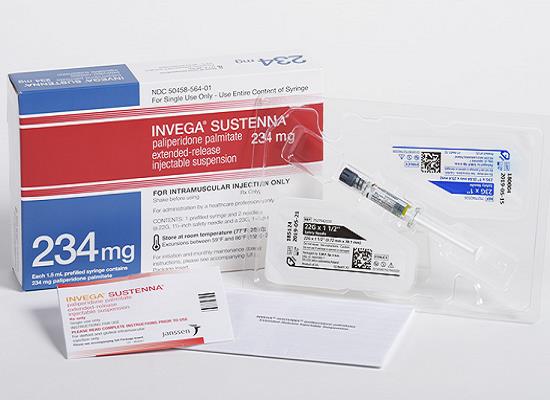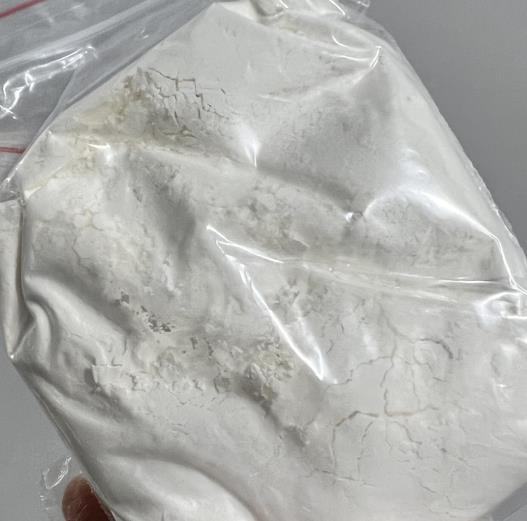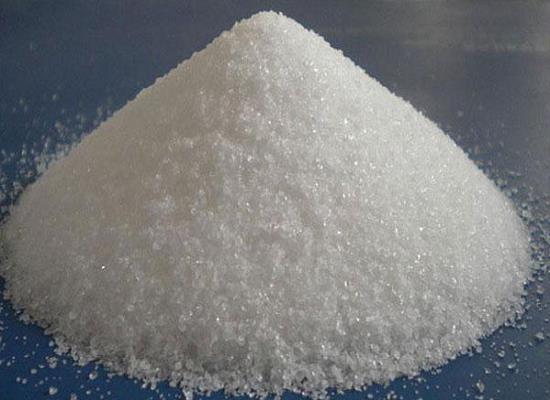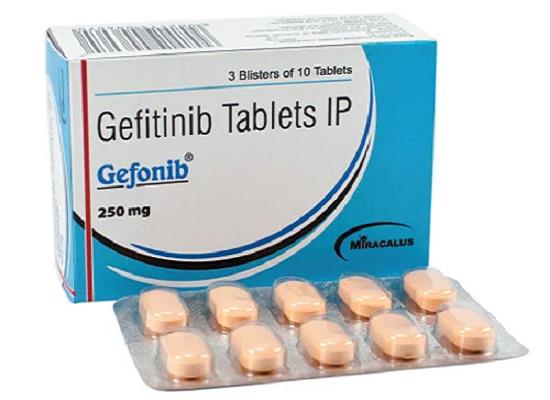Paliperidone palmitate: pharmacokinetics, clinical applications and safety
General Description
Paliperidone palmitate is a medication used to treat schizophrenia. It has different pharmacokinetic properties compared to risperidone, including slower absorption and lower bioavailability. Risperidone is extensively metabolized in the liver, while paliperidone palmitate undergoes less metabolism and is primarily eliminated through the kidneys. The half-life of oral risperidone can vary, while oral paliperidone has a stable half-life of around 24 hours. Paliperidone palmitate is an effective treatment for schizophrenia, reducing symptoms and improving medication adherence. It acts on dopamine and serotonin receptors and has a lower risk of extrapyramidal side effects. Common side effects include hyperprolactinemia, but overall, paliperidone palmitate has a good safety profile with fewer metabolic side effects compared to other antipsychotics.

Figure 1. Injection of paliperidone palmitate
Pharmacokinetics
Paliperidone palmitate is a medication used in the treatment of schizophrenia. Firstly, Paliperidone palmitate is absorbed more slowly from the digestive tract than risperidone. However, the rate of absorption can be significantly increased when taken with food. The bioavailability of orally administered paliperidone is less than 30%, whereas risperidone has a bioavailability of 100%. In terms of plasma protein binding, risperidone has a binding rate of 90%, while Paliperidone palmitate has a significantly lower binding rate of 74%. Metabolically, risperidone is extensively metabolized in the liver by the cytochrome P450 2D6 isoenzyme. Paliperidone palmitate, on the other hand, undergoes much less metabolism, with approximately 60% of the drug being eliminated unchanged through the kidneys. The half-life of orally administered risperidone can range from 3 to 24 hours, depending on genetically conditioned changes of CYP2D6 activity. In contrast, the half-life of oral paliperidone remains relatively stable at around 24 hours. Risperidone also has a higher risk for drug-drug interactions due to its metabolism by cytochrome P450, while Paliperidone palmitate has a lower risk. It should be noted that Paliperidone palmitate is a metabolite of risperidone, constituting about 31% of its metabolites. This means that patients treated with risperidone also receive Paliperidone palmitate. Different patients may produce varying amounts of Paliperidone palmitate based on their metabolizing capabilities. In conclusion, paliperidone palmitate exhibits pharmacokinetic differences compared to risperidone, making it a valuable option for the treatment of schizophrenia. The slow absorption, lower bioavailability, and unique metabolic profile contribute to its distinct pharmacological properties. 1
Clinical applications
Paliperidone palmitate is an atypical antipsychotic medication widely used in the management of schizophrenia. It is an extended-release injectable formulation that provides sustained therapeutic levels over an extended period. This medication acts on multiple neurotransmitter systems, including dopamine and serotonin receptors, which are believed to be imbalanced in individuals with schizophrenia. Clinical studies have demonstrated the efficacy of Paliperidone palmitate in reducing the symptoms associated with schizophrenia, such as hallucinations, delusions, disorganized thinking, and negative symptoms. The long-acting nature of this medication enhances adherence to treatment, as it only requires monthly or bi-monthly injections. It offers a convenient option for patients who struggle with daily oral medication compliance. Furthermore, Paliperidone palmitate has shown a lower risk of extrapyramidal side effects compared to other antipsychotic agents. However, as with any medication, it may cause adverse reactions such as weight gain, sedation, and metabolic changes. In conclusion, Paliperidone palmitate is an effective and well-tolerated treatment option for individuals with schizophrenia, providing sustained symptom relief and improved medication adherence. It plays a crucial role in the comprehensive management of this chronic mental disorder. 2
Safety
The safety of paliperidone palmitate was evaluated in various studies, including clinical trials and meta-analyses. The analysis focused on drug tolerance and side effects. Overall, paliperidone palmitate was found to have a good safety profile. The most common side effect observed was hyperprolactinemia, which resulted in an increase in prolactin levels. However, this effect was more significant in women than in men. Other rare side effects included post-injection syndrome, tardive dyskinesia, and extrapyramidal symptoms. Metabolic and extrapyramidal symptoms were identified as the most crucial side effects during long-term paliperidone palmitate treatment. Studies showed that weight gain under paliperidone palmitate treatment was less pronounced compared to other second-generation antipsychotics. Changes in blood cholesterol and glucose were similar to other antipsychotic treatments. Comparisons with risperidone LAI showed similar profiles of side effects between the two drugs. Extrapyramidal symptoms were observed in approximately 7% of patients in both groups. In conclusion, paliperidone palmitate demonstrated good drug tolerance and a favorable safety profile overall. It was well-tolerated by patients and showed fewer metabolic side effects compared to other antipsychotics. However, extrapyramidal symptoms and TD could still occur, although at relatively low frequencies. 3
Reference
1. Shimizu H, Neyens M, De Meulder M, Gopal S, Tsukamoto Y, Samtani MN, Remmerie B. Population Pharmacokinetics of Paliperidone Palmitate (Once-Monthly Formulation) in Japanese, Korean, and Taiwanese Patients With Schizophrenia. Clin Pharmacol Drug Dev. 2020 Feb;9(2):224-234.
2. Nussbaum AM, Stroup TS. Paliperidone palmitate for schizophrenia. Schizophr Bull. 2012 Nov;38(6):1124-1127.
3. Jarema M, Bieńkowski P, Heitzman J, Parnowski T, Rybakowski J. Paliperidone palmitate: effectiveness, safety, and the use for treatment of schizophrenia. Psychiatr Pol. 2017 Feb 26;51(1):7-21.
Related articles And Qustion
See also
Lastest Price from Paliperidone Palmitate manufacturers

US $0.00/g2025-04-21
- CAS:
- 199739-10-1
- Min. Order:
- 100g
- Purity:
- 98.0%
- Supply Ability:
- 50kg/month

US $10.00/KG2025-04-21
- CAS:
- 199739-10-1
- Min. Order:
- 1KG
- Purity:
- 99%
- Supply Ability:
- 10 mt



